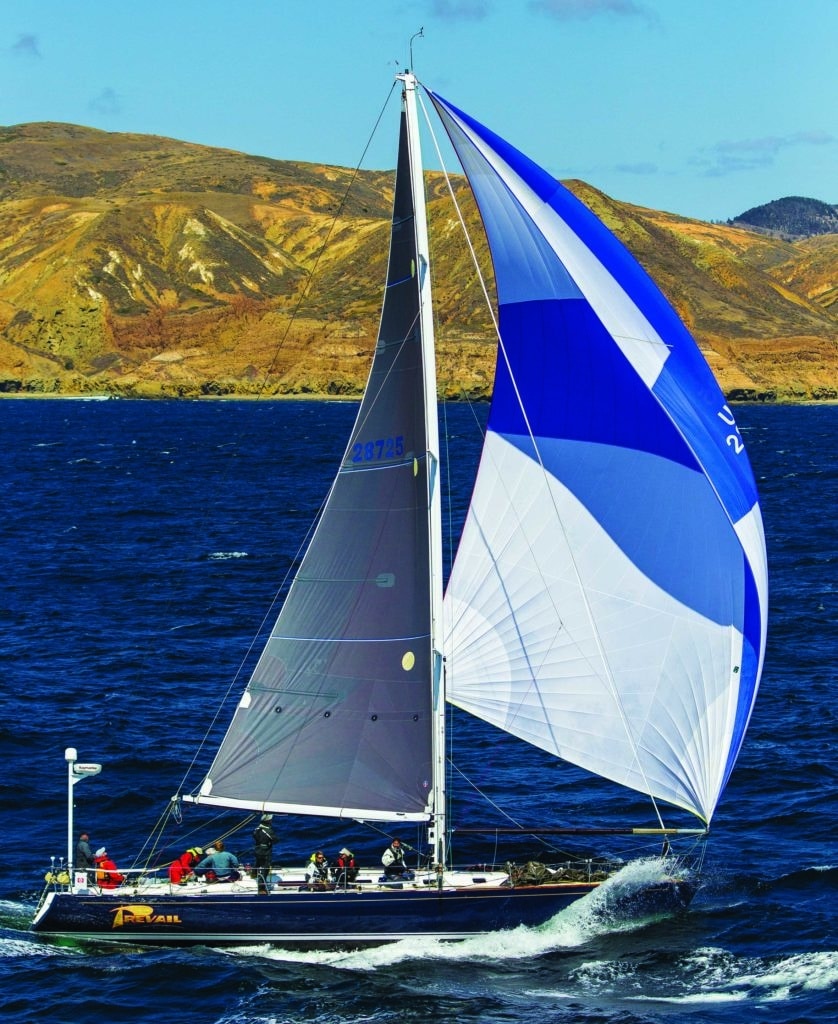
2015 SoCal 300
It was the success of last year’s inaugural SoCal 300 — which starts with a 35-mile reach from Santa Barbara across “Windy Lane,” before turning the corner at Santa Rosa Island and rocketing down to San Diego — that spurred the new circuit. California Offshore Race Week, which kicks off in late May, links two tried-and-true regattas with the SoCal 300 in an all-too-logical romp down California’s scenic and wild waters.
The event saw modest participation but spectacular conditions, with the race’s patron saint, Manouch Moshayedi, aboard Rio 100, establishing the course record of 16 hours, 27 minutes.
But it was offshore aficionado Bill Guilfoyle who connected the dots. Guilfoyle had also competed in the SoCal 300, aboard his Santa Cruz 52 Prevail. After the race, he had Prevail delivered 500 miles back up the coast, from San Diego to San Francisco, for the Coastal Cup. Sitting at the bar at the hosting Encinal YC with vice commodore Jim Vickers, he said: “You know, we’re doing this in the wrong order. We should start these races in San Francisco and finish in San Diego.” The die was cast.
The maiden CORW begins May 27 with the Spinnaker Cup from San Francisco to Monterey, and continues with a newly formatted Coastal Cup May 29 to 31. Arriving in Santa Barbara, the fleet will enjoy lay days and just-for-fun in-port racing before embarking on the SoCal 300 to San Diego on June 3. Organizing this marathon involved the dubious task of getting five yacht clubs to cooperate — almost as daunting as the series itself, considering the NorCal/SoCal divide, and with Santa Barbara straddling the Mason-Dixon Line of the Golden State.
“It’s not that common to get that many yacht clubs to work together and agree, but it was one of the coolest aspects of it,” says SoCal 300 chairman David Servais, who with his wife, Julie, runs San Diego Boatworks. “The process took half a year, but after reaching out to the clubs and a lot of sailors and boat owners, we finally got everyone on the same page, to coordinate schedules and requirements. We’re really trying to make offshore racing much more streamlined and appealing to the competitors, to bring in the most racers and have the most fun.”
Left coasters also have plenty of opportunities to do “the big expensive stuff,” Guilfoyle points out, like Mexico and Hawaii races, campaigns that tap wallets and take boats out of a full season of sailing, what with prep, racing, delivery and related expenses.
“We’re lucky to have a lot of round-the-island and shorter distance races too — really fun stuff,” he adds. “But this fills a nice spot in the mid-distance category, and will be a great steppingstone for someone who ultimately wants to do a Transpac.”
Plus, the new format is less daunting, with several “bail-out” points in case something goes wrong.
The Coastal Cup has long been coined the “Costly Cup” due to its reputation for carnage. Racing from San Francisco to Santa Barbara (or, occasionally, to Catalina or Marina del Rey), boats go way offshore to pick up the best wind. But big breeze equals big seas, and can come at a price. “Bad stuff can happen,” says Guilfoyle. “Broken rudders and rigs, roundups … If you were going to break something on a boat, it was going to happen during Coastal Cup.” Now, with the interlude in Monterey, racers won’t be inclined to venture as far offshore, nor all night. (Lest the big boys feel shortchanged by the dissected northern legs, however, a nonstop San Francisco to Santa Barbara option for maxis is still pending.)
The CORW will use ORR and the new (free) ORR-EZ rule to further encourage participation. The Spinnaker Cup, Coastal Cup and SoCal 300 will each dish out individual trophies, and there will be overall awards.
And if the race sounds appealing to sailors, imagine the attraction for the shore team. With pit stops at California’s most iconic waterfront cities — Tiburon, Monterey (think Pebble Beach Pro-Am Golf and Concours d’Elegance), Santa Barbara and San Diego — it’s not just another sailboat race: It’s a road trip through Shangri-La.









